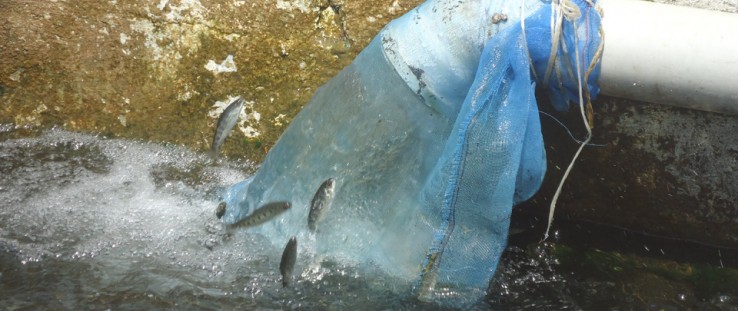 Farmers have created an artificial stream of water for trout babies to fulfill their natural instincts of swimming upstream. They call this phenomenon “dance of the fish.”
Gulsabah Amirova
Farmers have created an artificial stream of water for trout babies to fulfill their natural instincts of swimming upstream. They call this phenomenon “dance of the fish.”
Gulsabah Amirova
 Farmers have created an artificial stream of water for trout babies to fulfill their natural instincts of swimming upstream. They call this phenomenon “dance of the fish.”
Gulsabah Amirova
Farmers have created an artificial stream of water for trout babies to fulfill their natural instincts of swimming upstream. They call this phenomenon “dance of the fish.”
Gulsabah Amirova
Today, Hamid Mikayilov is proud to be the owner of the Girkhbulag Trout Farm, located in one of the most spectacular and historically rich regions of Azerbaijan—Sheki City.
Established in 1978 and covering almost 6 hectares, the farm’s operations declined following the collapse of the Soviet Union in the early 1990s and ceased operations completely in 2003.
When USAID experts met Mikayilov in 2009, he and his son Anar were attempting to revitalize the trout farm. However, limited resources and out-of-date knowledge, technology and skills had the two swimming upstream.
But with U.S. assistance, the father-son duo breathed new life into the old farm, turning a faltering small business into a viable one. The trout hatchery has grown from a small business with less than 1 ton of production per year into a medium-sized trout farm with almost 60 tons of production per year. The farm added 14 more raceways in 2012, and now employs 20 workers, including sales people, farmers and drivers.
“After almost 31 years of random growth, USAID’s technical assistance programs brought along techniques of planned farm management with the ability to set clear targets and greater vision of the farm enterprise,” says Mikayilov.
Abandoned Fish Farms
Aquaculture involves cultivating freshwater and saltwater fish under controlled conditions. During the Soviet era, Azerbaijan was home to a robust aquaculture industry, with regional fish farms administered by the government. Local production supplied the domestic and regional demand for fish products.
After the collapse of the Soviet Union, large state-owned fish farms became unprofitable and were abandoned. Azerbaijan’s economy stagnated from the break-up of the central production system. Following land reforms, collective farms and enterprises were parceled and allocated among rural dwellers, most of whom lacked basic understanding of production and farming practices.
Today, Azerbaijan has a population of 9.1 million and a GDP of $70 billion. Although agriculture contributes just 2.8 percent to the GDP, it employs almost 40 percent of the rural workforce. By comparison, the country’s oil industry accounts for almost 60 percent of the GDP but provides only 10 percent employment.
This underlines the importance of agriculture and, particularly, competitive farm products. The majority of Azerbaijan’s farmers are barely above the subsistence level of income and rural unemployment is high.
In recent years, local farmers have become interested in fish farming again because of its potential for high profits. At the same time, USAID was working to identify non-oil sector development opportunities, particularly in agriculture and especially aquaculture, which is considered an emerging and rapidly developing sub-sector with a promising future.
USAID’s Azerbaijan Competitiveness and Trade project is working to reinvigorate aquaculture, and has identified high-quality water supply, appropriate feed formulation, well-established hatchery operations, suitable packaging and product marketing as areas where the country’s fish farmers need the most assistance. Over 100 aquaculture farms are receiving ongoing technical assistance from USAID, including training in all aspects of fish farming.
As a newly energized sector in Azerbaijan, aquaculture is gaining momentum in satisfying the country’s domestic demand. By the mid-1990s, domestic production had fallen to less than 10 percent of consumption. Today, local fish farms supply over 40 percent (approximately 22,000 metric tons), and production is increasing as farmers expand and diversify their product line.
For Mikayilov, a project team helped develop business plans and provided hand-on guidance as the owners refurbished the farm, repaired raceways where the fish swim, and taught day-to-day management of a trout farm in line with global practices.
Thomas Ort, USAID’s aquaculture expert, has been providing ongoing assistance to Girkhbulag as well as several other fish farms in Azerbaijan since 2008, including advice on the re-design of existing raceway systems, preparation of balanced feed diets, achieving maximum hatch rates during the incubation season, and management of water quality to improve fish health and growth.
“These past few years were transformational for Girkhbulag as farm managers have implemented various recommendations. Given the naturally favorable conditions and farmers’ determination to succeed, this farm, just like many others in the country, will soon become one of the region’s prime fish suppliers,” says Ort.
In another step to help aquaculture here succeed, USAID/Azerbaijan several years ago helped broker a consolidated order of eyed (fertilized) fish eggs from one of the world’s largest U.S.-based suppliers. The combined order allowed farmers to purchase and import the eggs at a 45 percent discount.
Mikayilov attributes a major part of his success to this networking opportunity. He said that, although higher in price, the hatch rate of the U.S.-supplied fish eggs is 98 percent—much higher than the 80 percent hatch rate of Turkish-supplied fish eggs or the 50 percent hatch rate of local eggs. Today, Girkhbulag Trout Farm workers refer to descendants of those fish eggs as “USAID babies.”
Mikayilov says he now has a stronger belief and brighter hopes for the future of the aquaculture industry in Azerbaijan.
“All fish farmers throughout the country know USAID. We constantly communicate. We share training materials from USAID workshops and seminars,” he said. “The skills and knowledge acquired through … (the) programs are the biggest legacy that I will pass on to my son, when he becomes the manager of this farm.”
Gulsabah Amirova and Yashar Farajov are with USAID’s Azerbaijan Competitiveness and Trade project.







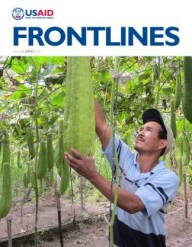

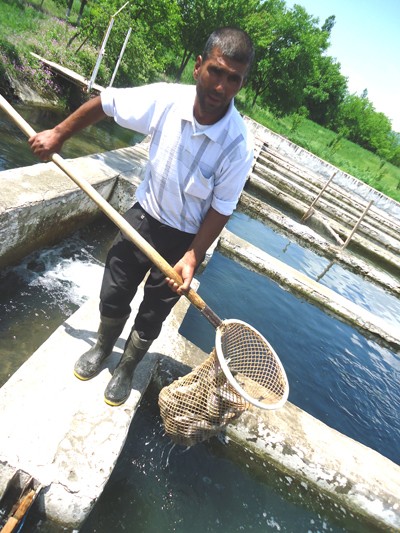
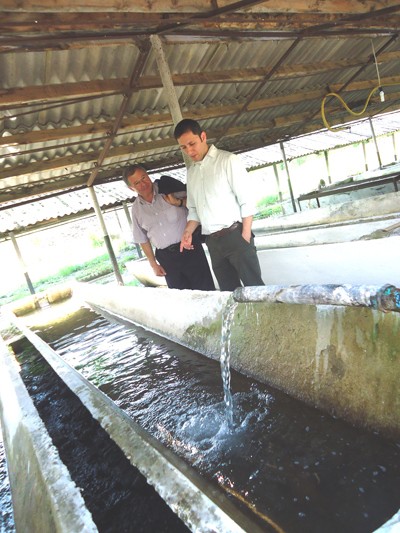
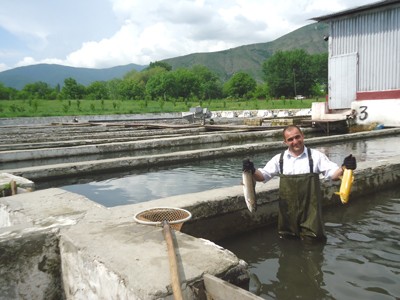
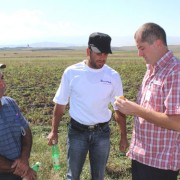
Comment
Make a general inquiry or suggest an improvement.